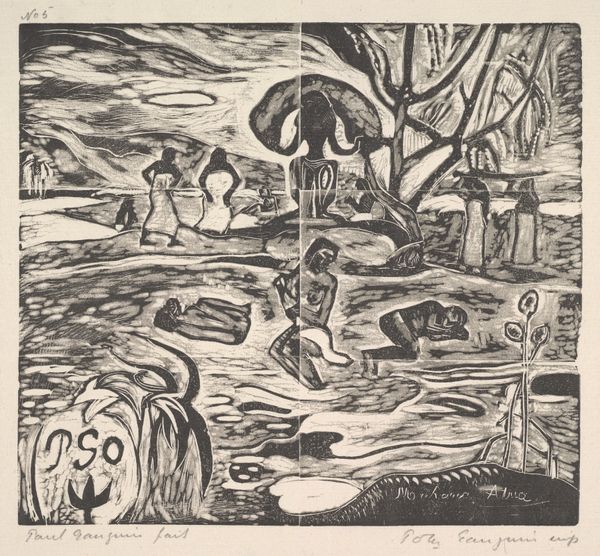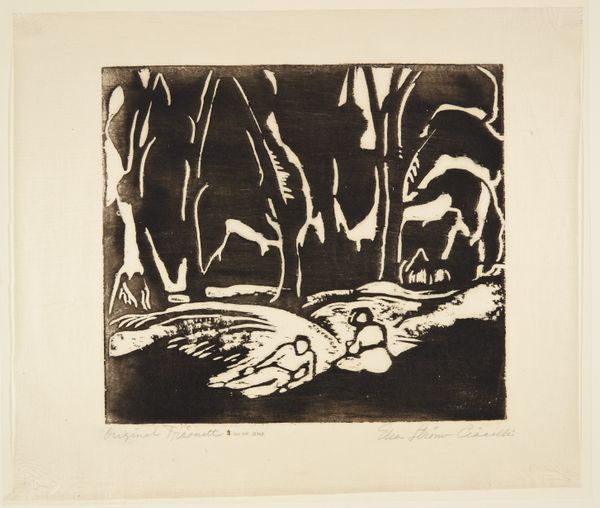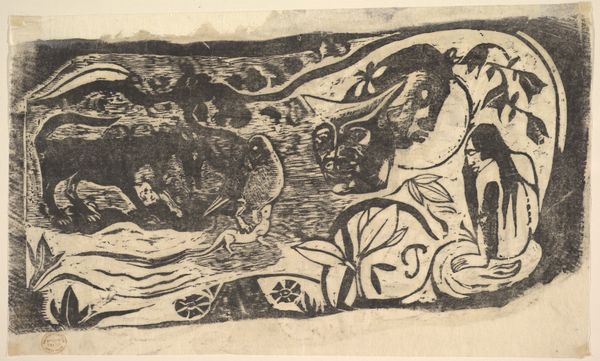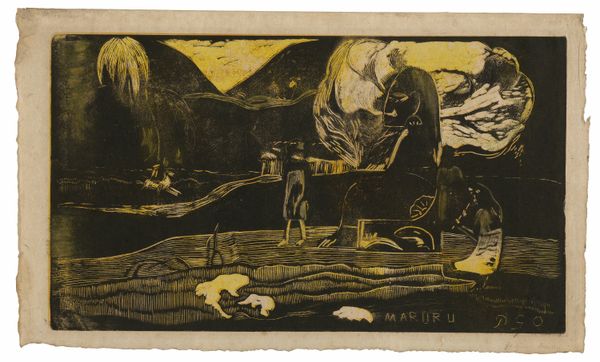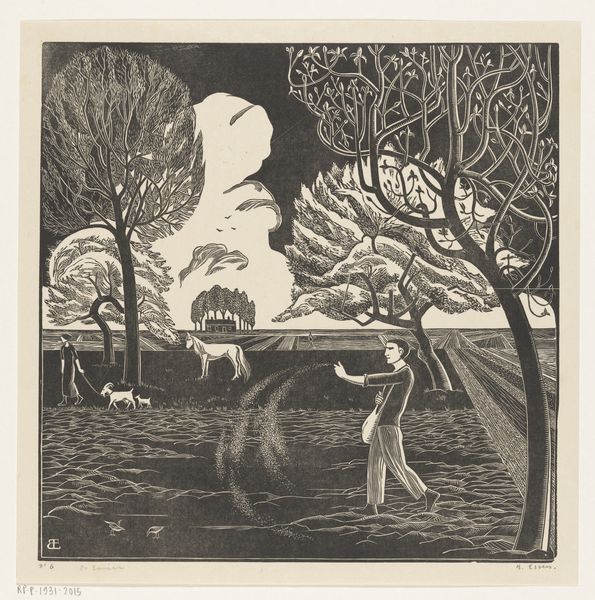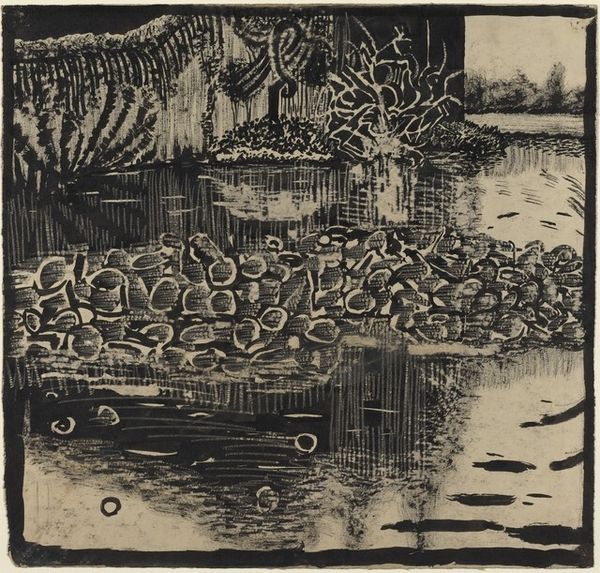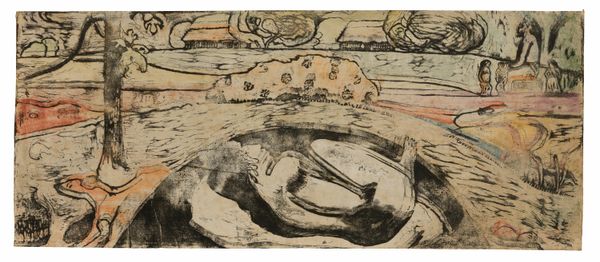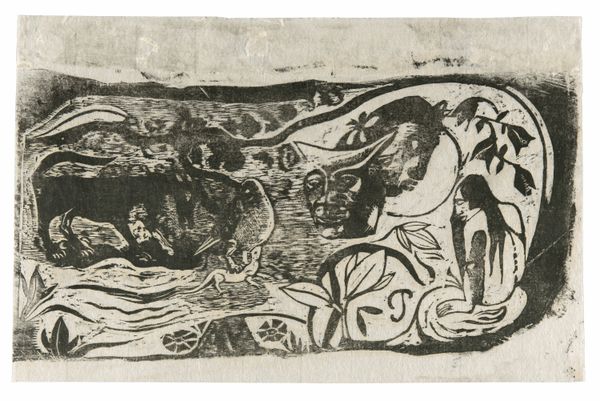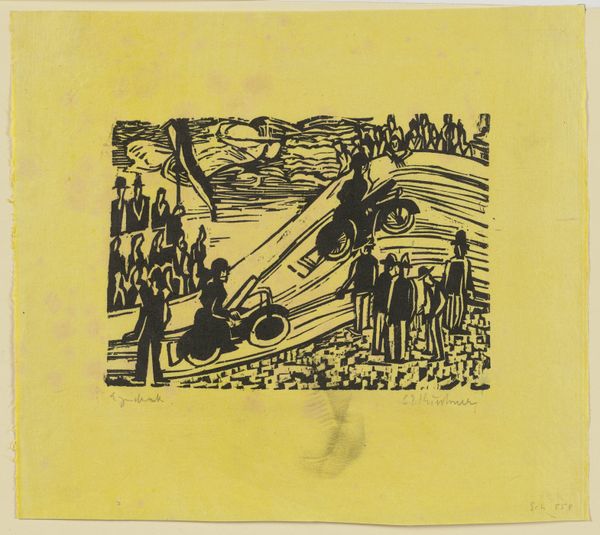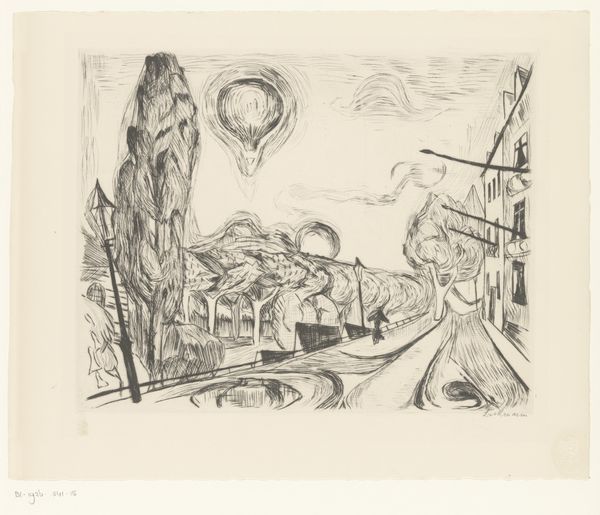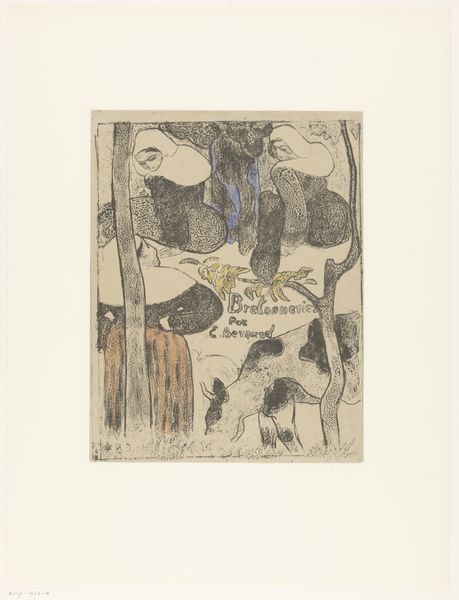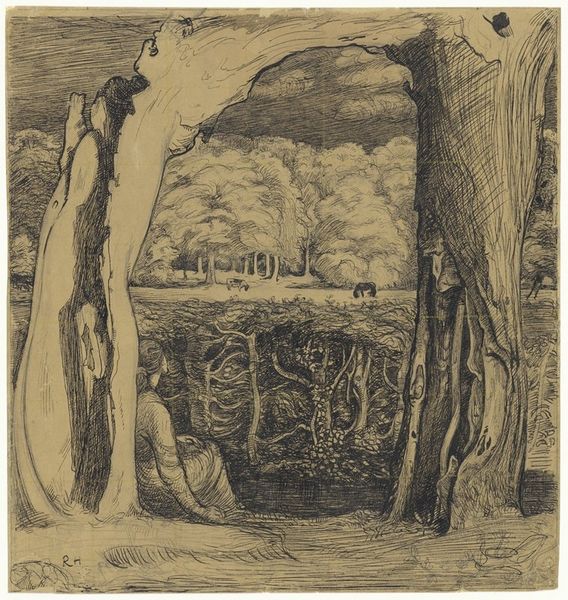
drawing, print, oil-paint, paper, woodblock-print, woodcut
#
drawing
#
narrative-art
#
ink painting
# print
#
oil-paint
#
landscape
#
figuration
#
paper
#
linocut print
#
woodblock-print
#
woodcut
#
symbolism
#
post-impressionism
Dimensions: 180 × 203 mm (image); 184 × 205 mm (sheet)
Copyright: Public Domain
Editor: This is Paul Gauguin’s "Mahana atua (Day of the God)," made around 1894-95. It's a woodcut print. I’m really struck by the sort of... dreamlike quality and how figures seem posed but disconnected. What do you see in this piece, especially in relation to its cultural context? Curator: I see a conscious layering of meaning. Gauguin is intentionally engaging with Tahitian spirituality but filtering it through his own Western lens. Notice the central figure—she’s a kind of deity, arms raised. This echoes traditional Polynesian beliefs, yet her posture and the worshipful figures surrounding her carry the weight of Christian iconography, almost a distorted Madonna figure. Do you observe how he contrasts light and dark? Editor: Yes, the stark contrast is very clear and pronounced! It makes some of the figures, especially that central deity, seem both powerful and remote, almost like a figure from a repressed memory. Is he trying to portray a clash of cultures through that light and shadow, do you think? Curator: Precisely. The deep shadows represent, for Gauguin, the mystery and perhaps the corruption of indigenous beliefs by colonialism. He uses symbolism—the figures, the landscape—to construct his personal narrative about paradise lost. What feelings do the ‘modern Eves’ and men in a regressed prostration evoke in you? Editor: There’s definitely a sense of longing, of an idealized past but tainted. I hadn’t thought of the "Madonna" comparison, but now I see it and the clash you mention. I see that I have projected my 21st century views and cultural awareness into Gauguin's world here. Curator: Indeed, we must allow historical empathy to inform how those symbols connect, while remaining critically aware. Editor: It’s fascinating to unpack these layers of meaning and consider how an artist’s own biases and intentions can shape our perception of a culture. Curator: Absolutely, and the ongoing dialogue makes it relevant.
Comments
No comments
Be the first to comment and join the conversation on the ultimate creative platform.
